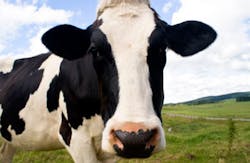According to a new report by the European Commission (EC), demand for dairy products in emerging markets will be the main driving force for growth in the sector over the next decade. The report, called Prospects for Agricultural Markets and Income of the EU 2012-2022, states that the biggest stimulus for increasing exports of dairy products to emerging markets will be the combined effect of economic growth, rising population and preference for various dairy products.
The document noted that the positive prediction for growth in the sector is based on the prospects for long-term export demand. Emerging markets have been a preferred destination for exports of dairy products from the EU over the past few years, and large countries like China have been at the focus of attention for European dairy farmers and processors.
According to the EC, the rising disposable income and the increasingly prosperous middle class in emerging markets are expected to lead to a significant surge in demand and consumption of dairy products. This will not only drive exports upwards but will also help commodity prices maintain their current levels.
RELATED: US milk processing industry facing hard times
Looking at specific product categories, the report found that the best performance over the period to 2022 is expected to come from cheese and skimmed milk powder. Cheese production is estimated to grow by almost seven percent on average over the period, reaching 9.6 million tons in 2022. Consumers are likely to prefer fresh dairy products, such as drinking milk, cream and yogurt, and this is predicted to sustain a rise in production to up to 49.6 million tons in 2022, eight percent up on figures from 2009 and 6.3 percent up on 2011.
In addition, EU skimmed milk powder output is set to increase by an estimated 23 percent over a decade, reaching roughly 1.3 million tons in 2022. Total exports would reach 678,000 tons by the end of the period, which is an increase of almost a third compared to 2011. Total butter production is not predicted to change over the next few years but a recovery is likely to take place shortly after the expiry of quotas, reaching 2.4 million tons in 2022, up eight percent on 2011 production.
Still, the demand for dairy products in emerging markets will not be sufficient to ensure that EU quotas are fully utilized over the next two years, the report predicts. The milk quota system was implemented in Europe in 1984, as a means to deal with overproduction. The system will be abolished in April 2015, with an increase of one percent to be added to each country's quota until then. The EC report claimed that a year before the quota system is removed, in 2014, EU milk deliveries will be 8.3 million tons, or six percent, below the quota level. Milk deliveries are expected to continue to fall short of the quota increase, leading to an aggregate under-utilization in the phase-out period, the report concludes.
